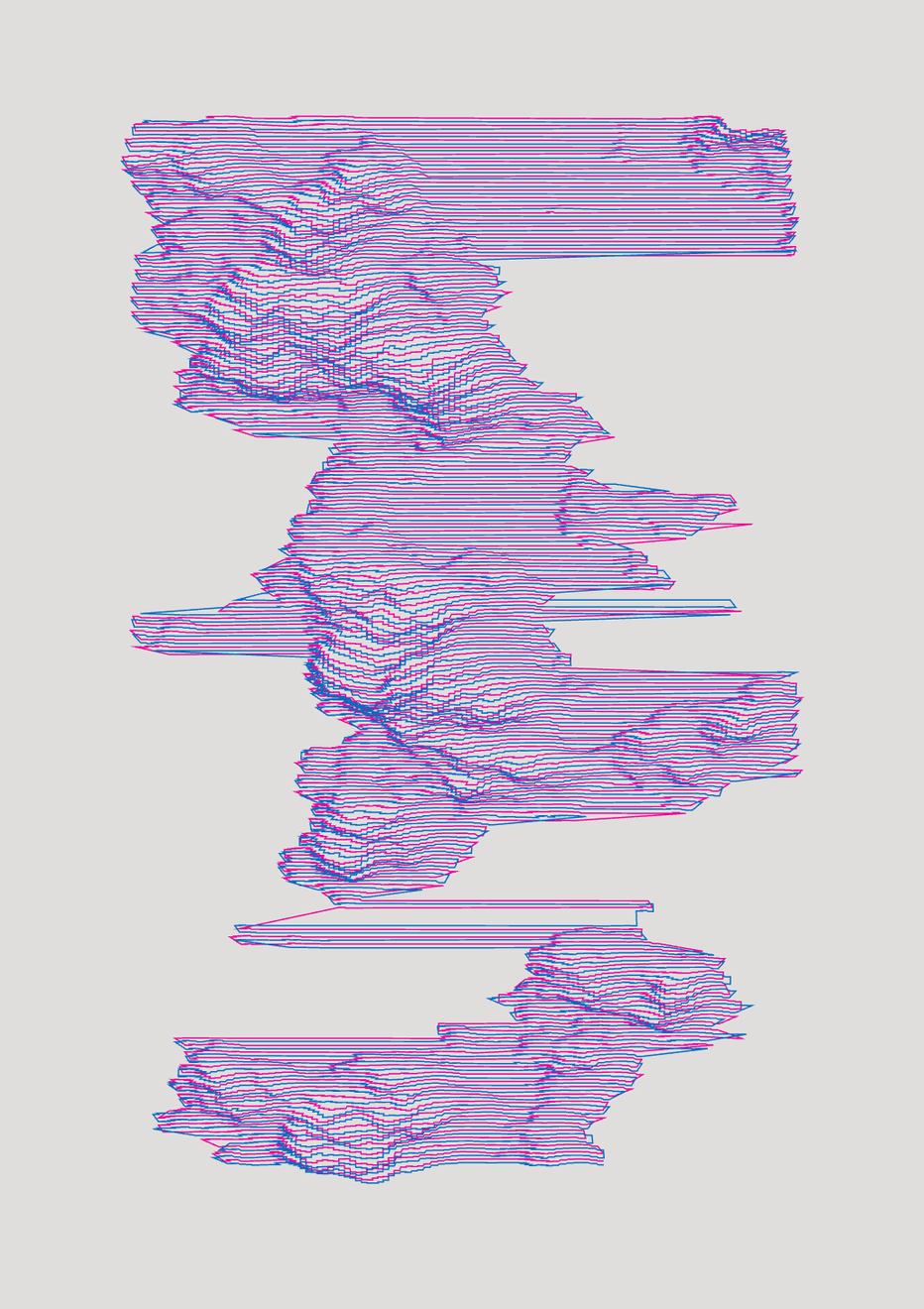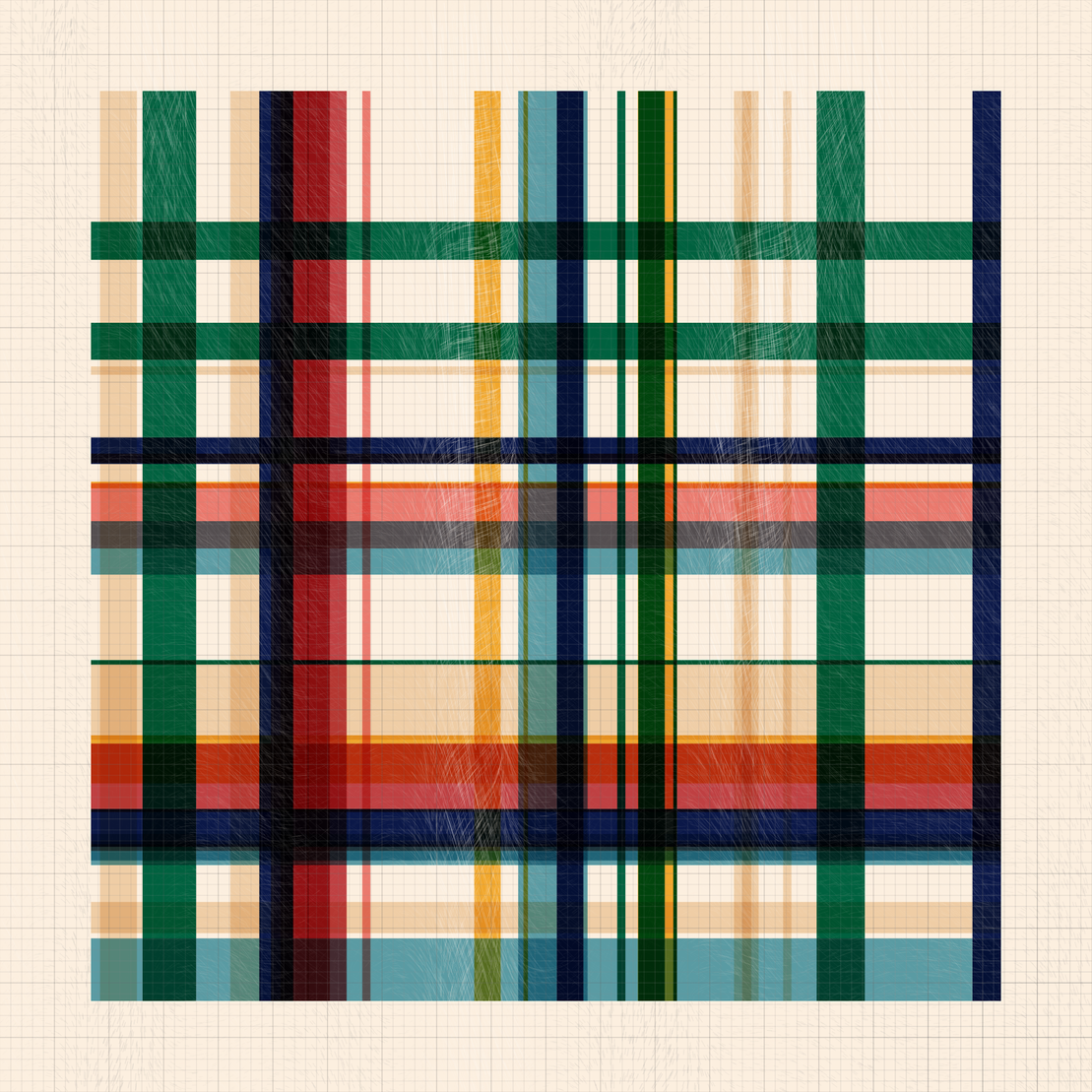
Capturing Nature with Plotter: A Conversation with Quentin Hocdé
written by fx(press)
For our audience who isn’t already familiar with you, can you give us a little background about yourself? How did you come to generative art?
I am an independent web developer and generative artist. 70% of my working time is dedicated to developing interactive websites, and the rest to my artistic projects. This year, I also had the opportunity to work for an artist, Joanie Lemercier. Since 2013, I have always created visuals in JavaScript during my free time, whether animated or not. During the pandemic, I created even more, and it was also during this time that Hic et Nunc emerged; the community was incredible, there was a lot of support, and Tezos had an ecosystem that looked good. I was able to evolve the types of visuals I'd been coding for years into real projects, refining them and choosing the "perfect" variations.
PARIS #190

What motivates you to continue exploring generative art? How often are you surprised by your code and its creative possibilities?
One of the most important motivations at the beginning was the community. On Twitter, everyone was encouraging each other; it was incredible. Another reason was that the technical side of what I was coding for years began to lean towards a common style across all my projects.
Generative art always gives us surprises that open up many perspectives. It's essential to know how to choose them and explore the right directions, even if there are no wrong directions ;) [quote] That's what I love about this form of art: the exchange with the code, the technical aspect, and our vision of a result that isn't always the expected one.
Generative art always gives us surprises that open up many perspectives. It's essential to know how to choose them and explore the right directions, even if there are no wrong directions. - Quentin Hocdé
Can you elaborate on the concept behind your fxhash 2.0 release, Fractured Landscapes?
Fractured Landscapes is a generative art project employing two animated lines to redraw natural scenes, revealing both the beauty and fragility of our planet. The combination of these animated lines adds a new dimension, creating depth and complexity in changing landscapes. The animation serves as a visual commentary on environmental challenges, highlighting the fractures on our planet. The project is based on an infinite animation, providing an ever-evolving visual experience. Designed for adaptability, it can be reproduced with a plotter for both digital and physical exploration.
Can you walk us through some aspects of the technical and creative processes used for this work?
I recently acquired a plotter, and I've been testing it a lot in the last few months. But I also really like animated creations. So, for this new project, I wanted it to be both animated and something you could draw with a robot. I worked in close collaboration with my plotter at every step. For the technical aspect, I draw each frame in a canvas2D. At any time, you can save a frame as an SVG, ready to be drawn with a pen plotter. To make the physical drawing simpler, I tried using just one line, drawn from left to right and top to bottom, so the pen doesn't have to lift. Turns out, I really liked how it looked and the style!
Continuing from my recent projects and research, I wanted to delve into nature again, but this time exclusively using code. I wanted to show both the beauty and the chaos of our landscapes. So, I've been working with various layers of noise (it was the tricky part during my process).
Then, the animation – one of my favorite parts. I wanted something infinite and quite mesmerizing, where you can get lost for several minutes. I worked with various layers using linear and trigonometric functions, along with noises. Using trigonometric functions provided a more circular appearance in certain cases reminiscent of the formation of waves and oceans.
Then, I wanted to add more depth. So, I played with colors, and I decided to add a second line. Mixing two complementary and generated colors gave the artwork a bit more personality.
Do you plan on releasing the physical drawings too?
I worked with the plotter for every step of the project, it's definitely a project that I want to see come to life beyond screens. The idea of it being a redeemable project is really interesting; I just want the project to be unique, and I need to carefully consider the number of editions if I decide to produce them.
How do you see your practice evolving in the context of generative art and NFTs? What future do you envision for yourself as a generative artist?
My vision and approach have evolved since the crazy beginnings of NFT. In the early days of fx(hash), I traveled around Europe in a camper van, creating many small projects. At the time, I was doing it for fun, wanting to show people my daily renderings. (All of this later allowed me to receive proposals in the world of digital art.)
Since early 2022, I have been independent and working on larger projects. My research phases are much longer and more advanced. I take my time. I also try to work with other mediums, such as using a plotter, mirrors, and different technologies.
Each project is now designed to live online but also to exist outside of our laptop and smartphone screens. This is something that fxhash has allowed me to prove: that generative art is a new approach, and it's uniquely mine.
Each project is now designed to live online but also to exist outside of our laptop and smartphone screens. - Quentin Hocdé
Where do you see this medium going in the next 5, 10, or 20 years? Is institutional acceptance important to you?
This medium is, for me, a starting point for other mediums, it's a great gateway, and, for generative art, it's the best way to start working with digital.
For me, coding is a real form of expression and art, so it's quite important to me that it is one day considered as fine art. But I know it will take a little more time. The most important thing is the story behind an approach.
Intersections #53

Do you collect generative art from other artists as well? What do you like, or what types of work appeal to you most?
Yes, I also collect, and I'm very excited about the arrival of version 2.0 because many exciting projects have been announced. My collection is very diverse, and I can't really explain why I collect a particular project, it's very instinctive. I also like to know the story behind a project and its creation steps.
How much do you think about the chain your artwork is minted on? Does it matter to you now, and do you think this will be more or less important in the future as blockchains evolve?
I'm a bit of a Tezos enthusiast. When Hic et Nunc (now called Teia) arrived, I appreciated the Tezos ecosystem, and it's quite important for me to prioritize this cryptocurrency. With the arrival of ONCHFS, I think my projects will be minted on it now.
—
Quentin Hocdé is an independent web developer and generative artist based in Bruxelles, Belgium. You can find his algorithmically generated visuals and animations on fxhash and Hic et Nunc (via objkt).
Fractured Landscapes, releasing on fxhash December 21.